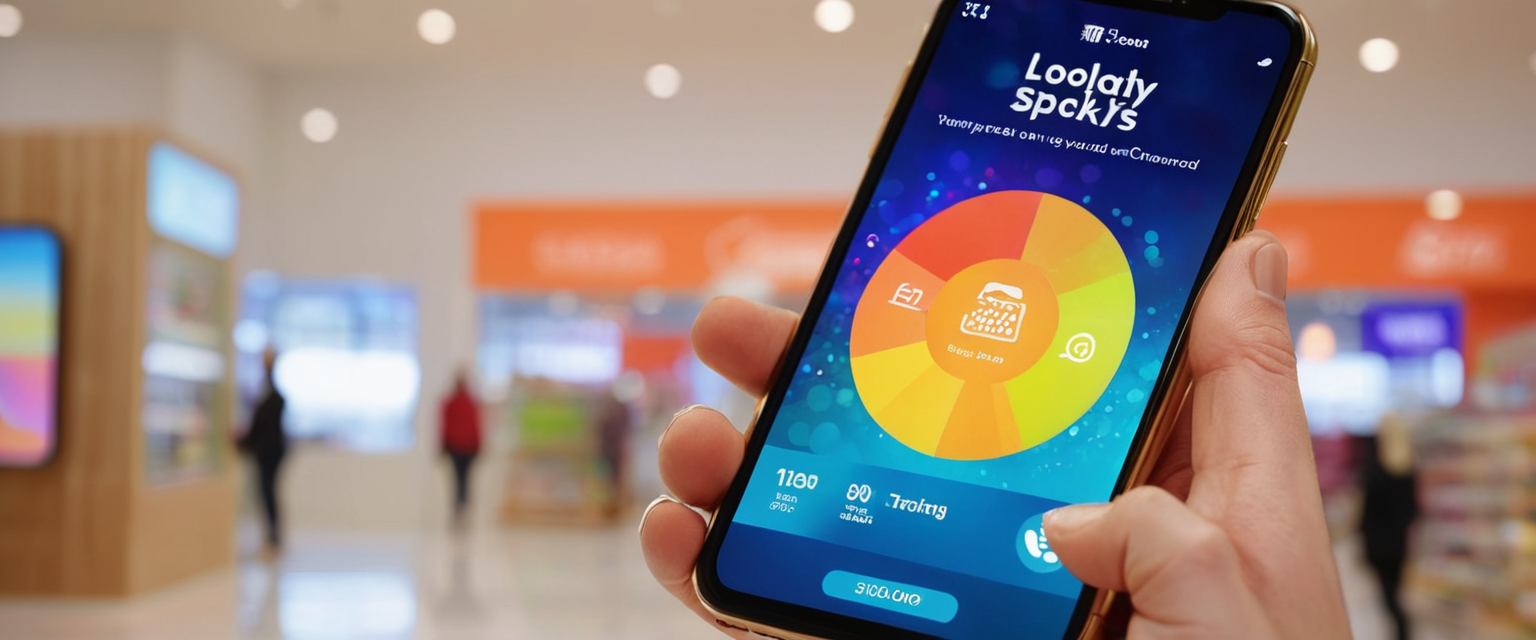
Retail loyalty programs have emerged as fundamental tools for modern consumer engagement, generating substantial value for businesses while simultaneously creating unprecedented privacy challenges. A recent Consumer Reports investigation revealed that Kroger, one of the United States’ largest grocery chains, generated approximately $527 million from its precision marketing division alone in the previous year, with these alternative profit ventures now representing more than thirty-five percent of the company’s net income. However, this data monetization has sparked significant concerns regarding the collection, use, and distribution of customer information. The research demonstrates that loyalty program data collection extends far beyond basic transaction records, encompassing detailed purchase histories, demographic inferences, location tracking, and behavioral profiles that are subsequently shared with numerous third-party entities without explicit consumer awareness. As browsers implement increasingly sophisticated tracking prevention mechanisms and regulatory frameworks like the General Data Protection Regulation and California Consumer Privacy Act reshape the digital privacy landscape, retail organizations face mounting pressure to balance data-driven personalization with consumer privacy expectations and legal compliance. This report provides a comprehensive analysis of how tracking cookies operate within loyalty programs, the privacy implications of current data collection practices, the regulatory requirements governing these activities, and the emerging alternatives that promise to deliver personalization while respecting consumer privacy in an evolving technological environment.
The Architecture and Function of Tracking in Retail Loyalty Programs
Retail loyalty programs operate as sophisticated data collection ecosystems that leverage tracking technologies, particularly cookies, to create comprehensive consumer profiles. When consumers enroll in a loyalty program, they initiate a data exchange that extends far beyond the visible reward structure of discounts and points accumulation. The process begins with the collection of personally identifiable information including names, email addresses, phone numbers, and home addresses. However, the data collection pipeline extends significantly deeper than these basic identifiers. Purchase history becomes one of the most valuable data streams, with loyalty systems capturing every transaction linked to a customer’s account, including specific items purchased, transaction frequency, spending amounts, and temporal patterns of shopping behavior. This transactional data provides retailers with granular insights into consumer preferences, lifestyle choices, and purchasing power.
Beyond purchase records, loyalty programs employ tracking cookies to monitor customer behavior both online and in physical retail environments. When customers interact with loyalty program websites or mobile applications, first-party cookies record browsing patterns, product searches, items viewed but not purchased, time spent on various pages, and navigation patterns through the digital interface. These cookies remain active throughout the customer’s browsing session and persist across multiple visits, enabling retailers to construct behavioral profiles that reveal shopping intent, seasonal interests, and product category preferences. The technical implementation of these cookies involves text files stored on a user’s device that are transmitted to retailer servers with each interaction, creating continuous tracking records that feed into customer data platforms and analytics systems.
Demographic data collection represents another critical dimension of loyalty program tracking architecture. While some demographic information comes directly from customer-provided registration data, retailers increasingly employ sophisticated inference mechanisms to predict additional demographic attributes based on observed behavior. Income levels, education attainment, household composition, and lifestyle characteristics are estimated through algorithmic analysis of purchase patterns, brand preferences, and product category selections. Kroger’s investigation by Consumer Reports revealed that the retailer employs an “income predictor” that estimates customer income based on shopping behavior, though the research found that such inferences frequently contain significant inaccuracies that nonetheless shape the offers and discounts presented to customers. This practice of demographic inference based on incomplete or inferred data creates what researchers term “surveillance profiling,” wherein retailers build detailed composite pictures of customers that may contain errors yet still drive personalized pricing and promotional decisions.
Location tracking constitutes another substantial component of loyalty program surveillance infrastructure. Mobile loyalty applications equipped with geolocation capabilities track when and where customers shop, enabling retailers to understand not only what consumers purchase but also the temporal and geographical patterns of their shopping behavior. Geofencing technology allows retailers to send targeted notifications when customers approach store locations, while beacon technology can track customer movement patterns within physical store environments, revealing which aisles customers visit, how long they spend in particular departments, and which product displays attract their attention. This convergence of online and offline tracking data creates what privacy advocates term “omnichannel surveillance,” wherein retail organizations maintain comprehensive records of consumer behavior across all interaction touchpoints.
The technical infrastructure supporting loyalty program tracking has become increasingly sophisticated through integration with third-party data sources and analytics platforms. Loyalty program operators frequently share customer data with data brokers, analytics providers, advertising networks, and marketing technology firms. One particularly striking finding from the Consumer Reports investigation of Kroger demonstrated that customer profiles obtained through Oregon’s data privacy law indicated that individual shopper profiles had been distributed to more than fifty different U.S. companies, including major data brokers, tobacco companies, financial institutions, and various analytics and marketing firms. This ecosystem of data sharing means that the information collected through a loyalty program enrollment extends far beyond the controlling retailer, becoming commodified within broader data marketplaces where it may be purchased, analyzed, combined with other datasets, and used for purposes entirely divorced from the original loyalty relationship.
Privacy Concerns and the Hidden Costs of Loyalty Program Participation
The privacy implications of retail loyalty program participation extend significantly beyond what most consumers recognize at the point of enrollment. While loyalty programs ostensibly offer a straightforward value proposition—rewards and discounts in exchange for shopping records—empirical evidence demonstrates that the actual data exchange significantly favors retailers and data intermediaries over consumers. Research from Forrester and similar organizations indicates that consumers consistently underestimate the economic value and scope of the personal information they provide through loyalty program participation. Loyalty program members frequently report surprise upon discovering the extent of tracking, the breadth of data sharing, and the uses to which their information is put once captured within retailer systems.
The monetization of loyalty program data creates asymmetrical power dynamics between retailers and consumers. Detailed customer profiles represent valuable assets that retailers leverage to extract maximum profit from each consumer relationship through increasingly sophisticated pricing strategies and promotional tactics. Retailers analyze behavioral data to identify price-sensitive customers, enabling dynamic pricing where different consumers see different prices for identical products based on their individual characteristics and perceived willingness to pay. This practice, termed “surveillance pricing” by consumer advocates and researchers, leverages loyalty program data to identify vulnerable populations and extract premium prices from consumers with limited alternatives, higher perceived necessity, or demonstrable brand loyalty. Research by the Federal Trade Commission documented that retailers frequently use personal information derived from data collection activities including loyalty programs to set targeted and tailored prices, with variation dependent on a person’s location, demographics, and browsing history.
Data accuracy and the misuse of inferred demographic information compound privacy concerns within loyalty program ecosystems. The Consumer Reports investigation of Kroger’s data practices found numerous inaccuracies in demographic profiles, with shopper profiles incorrectly estimating age, income levels, household composition, and educational attainment. Critically, when retailers utilize these inaccurate profiles to make decisions about which discounts to display or which promotional offers to present, consumers experience concrete harms through reduced access to savings or higher effective prices for purchases. A customer incorrectly classified as higher-income may receive fewer valuable discount offers, resulting in paying higher prices for identical items compared to customers with similar purchasing patterns but different demographic classifications. The opacity of these algorithmic decision-making processes means consumers typically remain unaware that they are being charged differential prices or receiving different offer sets based on algorithmically-inferred demographic characteristics.
The risks associated with loyalty program data breaches present additional privacy vulnerabilities that extend beyond unauthorized data access. Loyalty program accounts consolidate concentrated repositories of personal and financial information including purchase history, contact details, payment methods, and behavioral patterns. The economic incentives for attackers to compromise loyalty program databases are substantial, making these systems priority targets for cybercriminals. A data breach affecting a loyalty program exposes not just account credentials but comprehensive histories of consumer behavior, preferences, and purchasing patterns that enable identity theft, account compromise, and targeted social engineering attacks. The average cost of data breaches in the retail sector now exceeds $4.88 million, with expenses extending beyond technical remediation to include customer notification, regulatory penalties, credit monitoring services, and long-term brand reputation damage. Consumer trust in loyalty programs proves remarkably fragile when confronted with data breach incidents, with research indicating that nineteen percent of consumers abandon retailers entirely following loyalty program data breaches, regardless of loyalty program tenure or accumulated rewards.
The challenge of data secondary use represents another dimension of privacy concern within loyalty program structures. When consumers consent to participation in a loyalty program, they typically understand their data will be used to personalize their shopping experience and target promotional offers relevant to their demonstrated interests and purchasing patterns. However, loyalty program data frequently flows into secondary uses far removed from this original purpose, including sale to unrelated third parties for purposes including credit risk assessment, medical insurance underwriting, and behavioral prediction unrelated to retail. This secondary use of loyalty program data occurs frequently without explicit consumer awareness or consent, violating principles of data minimization and purpose limitation central to privacy frameworks like GDPR and embodied in consumer expectations regarding appropriate data handling.
The Regulatory Framework Governing Loyalty Program Data Collection and Tracking
The regulatory landscape surrounding loyalty program data collection has evolved dramatically in response to documented privacy abuses and consumer demand for greater data protection. The European Union’s General Data Protection Regulation, which became effective in 2018, established that any website or organization collecting data from European Union residents must comply with stringent privacy requirements regardless of where the business itself operates geographically. The GDPR’s principles require that organizations obtain explicit, opt-in consent before activating cookies on websites or collecting personal data, with consent requirements applying across all cookie categories except those strictly necessary for website functionality. Organizations must provide comprehensive cookie policies that disclose technical specifications, duration, provider identity, and specific purpose for each tracking cookie in use, with these disclosures presented in plain, non-legal language accessible to ordinary consumers. The GDPR’s transparency requirements extend to complete disclosure of data usage, data sharing practices, and the rights available to consumers regarding their personal information.
The California Consumer Privacy Act, which took effect in January 2020 and was subsequently enhanced by the California Privacy Rights Act effective in 2023, operates on an alternative regulatory framework compared to the European approach. Rather than requiring opt-in consent before data collection, the CCPA permits opt-out mechanisms, allowing consumers to request that companies cease selling or sharing their personal information. However, the CCPA establishes specific requirements when businesses offer financial incentives in exchange for consumer data, explicitly classifying loyalty programs as financial incentive arrangements. Under this classification, businesses must obtain affirmative authorization from consumers and provide clear disclosure explaining the value of the incentive, explaining how that value was calculated, and providing a dedicated notice of the financial incentive arrangement in the privacy policy. For consumers under sixteen years old, the CCPA requires parental consent, and for consumers under thirteen, parental permission is mandatory.
Colorado’s Privacy Act represents another evolution in state-level privacy regulation, establishing particular requirements for loyalty program data collection. Colorado’s framework requires that data collected through “bona fide loyalty programs” be strictly necessary for program operation, explicitly prohibiting over-collection based on convenience or speculative future usefulness. When businesses delete consumer data in response to deletion requests, they must provide explanations of how the deletion will impact loyalty program functionality rather than simply denying deletion requests. The statute requires that loyalty program operators provide clear notice regarding which third parties and program partners will access personal information, with business partners enumerated in plain language accessible to ordinary consumers.
The United Kingdom’s Information Commissioner’s Office issued clarification in autumn 2024 regarding cookie consent requirements specifically applicable to loyalty program and cashback reward models. The ICO determined that cookies employed to track purchases and deliver rewards constitute “strictly necessary” cookies that are essential for delivering a service explicitly requested by the user, meaning such cookies can be deployed without obtaining explicit user consent provided their use is strictly limited to service delivery. This ruling has significant implications for loyalty program operators, particularly those operating in conjunction with affiliate marketing or cashback arrangements, as it clarifies that transaction tracking cookies do not require consent banners when deployed for the essential purpose of reward redemption. However, the ruling explicitly states that any cookies employed for secondary purposes beyond the core loyalty service remain subject to consent requirements.
Additional privacy regulations across multiple jurisdictions including Canada’s Personal Information Protection and Electronic Documents Act, Australia’s Privacy Act, Brazil’s Lei Geral de Proteção de Dados, and emerging privacy frameworks in other states and countries have established overlapping requirements that create substantial compliance complexity for retail loyalty program operators. Organizations must navigate this regulatory patchwork, understanding which requirements apply to their specific customer base and operations across multiple jurisdictions. A loyalty program operator serving customers across the European Union, California, Colorado, and Canada must simultaneously comply with GDPR’s opt-in requirements, CCPA’s financial incentive regulations, Colorado’s data minimization standards, and PIPEDA’s Canadian requirements, often resulting in the highest standard across all jurisdictions being applied globally to ensure compliance.
Cookie Technology, Browser-Level Protections, and the Evolution of Tracking Control
The technical mechanisms underlying cookie-based tracking have become increasingly sophisticated while simultaneously facing mounting technical and regulatory pressure through browser-level blocking technologies. Third-party cookies, which enable cross-site tracking by allowing advertising networks and analytics providers to track consumer behavior across multiple unrelated websites, function through a process wherein websites embed content from external domains that set cookies in users’ browsers. These third-party cookies remain active across all visited websites, enabling tracking entities to build comprehensive profiles of consumer interests, browsing patterns, and behavior across the entire web, creating the foundation for targeted advertising and behavioral analysis that has powered digital marketing for nearly three decades.
Browser manufacturers, responding to growing consumer privacy concerns and regulatory pressure, have implemented increasingly aggressive mechanisms to restrict third-party cookie functionality. Apple’s Safari browser introduced Intelligent Tracking Prevention in June 2017, implementing technology that entirely blocks third-party cookies and restricts first-party cookies set through client-side browser mechanisms to a seven-day retention period unless the user actively interacts with a website. Mozilla’s Firefox browser launched Enhanced Tracking Protection in 2019, maintaining a regularly updated list of known trackers and automatically blocking third-party tracking cookies using this curated list, while simultaneously preventing fingerprinting techniques and protecting against crypto miners that exploit device resources without user knowledge. These browser protections have achieved substantial market penetration, with Safari protecting approximately seventeen percent of global internet users and Firefox another three to five percent of users through automatic third-party cookie blocking.
Google Chrome, which maintains approximately sixty-seven percent of global browser market share, initially announced intentions to deprecate third-party cookies by 2022, subsequently delaying that timeline to 2023, then 2024, and finally announcing in 2024 that third-party cookies would remain enabled indefinitely with users given manual control to disable them through browser settings. This reversal of Google’s deprecation timeline has substantial implications for the digital advertising ecosystem and loyalty program tracking infrastructure, as it preserves the continued viability of traditional third-party cookie-based targeting and cross-site tracking mechanisms. However, regulatory pressure continues to mount, and user expectations regarding privacy controls persist, creating ongoing pressure toward privacy-first tracking mechanisms even absent formal Chrome deprecation requirements.
Consent Management Platforms have emerged as essential infrastructure for obtaining and managing user consent to cookie usage in compliance with increasingly stringent privacy regulations. These platforms provide standardized mechanisms for displaying cookie consent banners, capturing user preferences, categorizing cookies into functional groups, and implementing granular consent controls that allow users to accept or reject cookies on a category-by-category basis. CMP technology typically includes cookie scanning functionality that automatically detects cookies deployed on a website, categorizes them according to regulatory frameworks, and provides transparency regarding cookie purpose, duration, and controlling entity. The most comprehensive CMPs integrate with tag management systems to automatically enforce user consent decisions, blocking non-consented tracking technologies from loading or executing until users grant explicit permission.
First-party cookie mechanisms, which remain active in most browsers including Chrome, enable retailers and loyalty program operators to track individual user behavior within their own digital properties without deploying third-party tracking mechanisms. First-party cookies represent the most privacy-conscious approach to personalization available within traditional cookie-based tracking frameworks, as they capture only behavior on the retailer’s own websites and applications rather than aggregating cross-site tracking data. Under both GDPR and CCPA frameworks, first-party cookies employed for core website functionality and personalization can operate with substantially reduced consent friction compared to third-party cookies, provided retailers transparently disclose their cookie practices and provide meaningful opt-out mechanisms.

The Shift from Third-Party to First-Party Data Collection in Loyalty Programs
The convergence of browser-level cookie protections, regulatory requirements, and consumer privacy expectations has catalyzed a strategic shift within retail loyalty programs away from reliance on third-party tracking data toward first-party data collection directly from customer interactions. This transition represents a fundamental reshaping of loyalty program data strategies, requiring organizations to invest in direct customer relationships and explicit data collection mechanisms rather than relying on inferred behavioral targeting derived from third-party tracking sources. Loyalty programs themselves have become recognized as premier mechanisms for first-party data collection, functioning as explicit value exchanges wherein customers voluntarily share personal information in return for program benefits.
Zero-party data, defined as information that customers explicitly and willingly provide to brands, has assumed increasing strategic importance within this data landscape. Rather than inferring customer preferences and behaviors from observed actions, retailers can now directly solicit customer preferences through surveys, preference centers, profile completion incentives, and gamified data collection experiences. Starbucks Rewards illustrates this approach effectively, where members now comprise approximately fifty-two percent of the coffee company’s U.S. sales, providing the organization with explicit data regarding preferences, dietary restrictions, flavor choices, and seasonal interests. By incentivizing profile completion and survey participation through loyalty program point rewards, retailers can accumulate detailed zero-party data that proves more accurate and actionable than inferred demographic information derived from behavioral tracking.
Receipt scanning and code exchange represent innovative mechanisms for capturing first-party data within loyalty program contexts while simultaneously providing customers with transparent, opt-in value exchanges. General Mills’ Box Top program exemplifies this approach, allowing program participants to scan grocery receipts into a mobile application, not only capturing detailed purchase records but also enabling the organization to understand household shopping behavior and make charitable donations based on customer participation. Google Opinion Rewards for Android operates similarly, allowing users to upload receipts from store purchases in exchange for monetary rewards, while simultaneously capturing detailed transaction-level data that feeds directly into Google’s customer understanding and advertising systems. Code exchange mechanisms deployed through packaging, email, and in-store materials provide similar capabilities, allowing retailers to capture validated customer actions while maintaining explicit user control over participation decisions.
The first-party data shift has created competitive advantages for retailers able to successfully implement direct customer relationships while maintaining strong privacy protections. Progressive profiling methodologies collect data incrementally over extended customer relationships rather than requesting comprehensive information at initial enrollment, reducing friction while building richer profiles through repeated interactions. Retailers employing progressive profiling strategies request only essential information at initial loyalty program signup—typically email address and basic location data—before subsequently requesting additional profile information at relevant moments when customers have demonstrated strong engagement with the program. This approach simultaneously improves enrollment rates by reducing initial friction while enabling data quality through organic engagement rather than coercive requirements.
Customer data platforms have become essential infrastructure for centralizing first-party data collection from multiple touchpoints including loyalty program enrollment, transactional systems, website behavior, mobile application interactions, customer service contacts, and in-store purchases. By unifying disparate data sources into comprehensive customer profiles maintained entirely within proprietary first-party systems, retailers can achieve sophisticated personalization while maintaining data sovereignty and reducing dependence on third-party data sources subject to browser restrictions and regulatory limitations. Organizations like Kroger and Walmart have invested substantially in proprietary customer data platforms that consolidate purchase history, loyalty program data, website behavior, and demographic information into unified profiles enabling precise targeting, personalized pricing, and dynamic promotional strategies.
The Impact of Third-Party Cookie Deprecation and Browser Evolution on Loyalty Program Operations
The technical elimination or significant restriction of third-party cookies has profound implications for retail loyalty program operations, particularly for programs that previously relied on cross-site tracking to understand customer behavior across multiple retail channels and unrelated websites. The loss of third-party tracking capability eliminates the ability to attribute consumer purchases to specific marketing touchpoints when those touchpoints occur on external websites or within partner networks. Publishers and affiliate networks that previously operated through third-party cookie-based attribution now face substantial measurement challenges, as conversion attribution between promotional placements and actual purchases becomes significantly more difficult without persistent cross-site identifiers. Market research indicates that removal of third-party cookies has historically reduced attribution accuracy by thirty to forty percent, creating substantial challenges for retailers attempting to measure marketing campaign effectiveness and return on investment.
Retailer profitability increasingly depends on loyalty program data rather than third-party tracking infrastructure, fundamentally shifting strategic priorities within the industry. E-commerce retailers specifically have recognized that customer account creation, loyalty program enrollment, and direct email relationship management provide more reliable customer tracking and personalization infrastructure than external third-party cookies. This realization has accelerated investment in loyalty program technologies, customer data platforms, and first-party marketing automation infrastructure, with organizations recognizing that owned customer relationships represent more valuable, controllable, and sustainable competitive advantages compared to purchased third-party data increasingly restricted by regulatory and technical barriers.
The decline of third-party cookies has simultaneously created opportunities for retailers to differentiate through superior privacy practices and customer-centric data handling. Forward-thinking organizations have recognized that privacy protection can function as a brand differentiator and loyalty driver, enabling them to capture market share from competitors perceived as excessively invasive or opaque regarding data practices. Apple’s brand positioning explicitly emphasizes privacy protection as a core value proposition, enabling the organization to attract and retain customers willing to accept reduced personalization in exchange for verifiable privacy commitments. Similarly, Starbucks Rewards has built customer trust through transparency regarding algorithmic decision-making, providing members with visualization tools that reveal exactly what data influences their personalized offers.
The erosion of third-party tracking capability has simultaneously pressured publishers and content providers dependent on advertising revenue to develop alternative monetization models and audience development strategies. Publishers facing thirty to fifty percent reductions in advertising revenue attributable to third-party cookie restrictions have diversified revenue streams through subscription models, first-party data collection, direct advertising relationships with premium advertisers, and retail media networks. This restructuring of publisher economics has particular implications for retail loyalty programs, as it reduces the attractiveness of affiliate marketing channels and partnership mechanisms previously mediated through third-party cookie tracking.
Alternatives and Emerging Technologies for Privacy-Preserving Tracking and Personalization
The technical landscape surrounding tracking and personalization has rapidly evolved to accommodate privacy requirements and cookie restrictions through alternative mechanisms designed to deliver attribution, measurement, and personalization capabilities without cross-site tracking. Google’s Privacy Sandbox represents an industry-wide initiative to develop privacy-first technologies capable of supporting digital advertising use cases while eliminating covert tracking and individual-level tracking identifiers. The Protected Audience API enables remarketing and custom audience use cases without third-party cross-site tracking, allowing browsers to conduct ad auctions locally on user devices rather than transmitting personal data to third-party servers. Attribution Reporting APIs enable measurement of ad performance without cross-site tracking, utilizing aggregated reporting mechanisms that prevent individual-level tracking while still providing advertisers with insights regarding campaign effectiveness.
First-party data activation and server-side tracking represent alternative technical approaches to loyalty program personalization and measurement that eliminate dependence on cookies entirely. Server-side tracking relocates data collection from users’ browsers to retailer-controlled servers, providing organizations with complete control over data collection, consent management, and processing. This approach simultaneously reduces vulnerability to ad blockers and browser privacy protections that increasingly interfere with browser-based tracking mechanisms. Organizations implementing server-side tracking convert first-party cookies into tokens or identifiers generated server-side, maintaining customer identity across sessions without relying on persistent browser cookies vulnerable to technical restrictions or consumer opt-out mechanisms.
Contextual advertising has reemerged as a significant personalization mechanism as organizations recognize that content relevance can be derived from website content context rather than individual tracking history. Rather than tracking a user’s browsing history across websites to build interest profiles, contextual advertising analyzes the specific webpage content a user is currently viewing and delivers ads relevant to that immediate context. A user viewing a travel website receives advertisements for hotels and flights regardless of their personal browsing history, enabling relevant personalization without persistent individual tracking. Retailers have recognized that many personalization use cases can be effectively addressed through contextual mechanisms combined with explicit customer preferences captured within loyalty programs, reducing dependence on historical behavioral tracking.
Consent-based first-party data collection has emerged as the foundation for sustainable loyalty program personalization architectures operating within regulatory frameworks and consumer privacy expectations. Organizations implementing comprehensive customer data platforms that consolidate first-party data from multiple owned channels while respecting explicit customer consent preferences have demonstrated superior performance compared to competitors relying on third-party data subject to regulatory restrictions and technical blocking. Leading retailers including Booktopia, BrandAlley, and Hobbii have successfully implemented first-party personalization strategies yielding substantial revenue increases through improved customer retention, increased purchase frequency, and higher average order values.
Building Trust Through Privacy-First Loyalty Program Design and Transparent Data Practices
Industry research demonstrates that consumer trust in loyalty programs and brand willingness to engage with personalization depend critically on perceived privacy protection and transparent data handling. A Deloitte survey found that while ninety-one percent of consumers legally consent to terms and conditions without reading them, seventy-nine percent express concern about how companies use their data, illustrating a trust paradox wherein consumers simultaneously accept data collection through contractual consent while harboring significant privacy concerns. Forrester research indicates that sixty-four percent of consumers are more likely to trust companies that minimize data collection, while eighty-eight percent of consumers prove more likely to trust organizations that transparently explain how their data is anonymized and used for analysis. An analysis by Label Insight demonstrated that ninety-four percent of consumers remain loyal to brands offering complete transparency regarding data practices.
Privacy-first design principles have emerged as essential best practices for loyalty program development, requiring that organizations consciously minimize data collection, implement granular consent controls, and provide meaningful transparency regarding data usage and sharing practices. Data minimization principles dictate that organizations collect only personal information essential for program operation, explicitly prohibiting over-collection based on speculative future utility or convenience. Companies implementing data minimization strategies simultaneously reduce security risks, compliance burdens, and consumer privacy concerns while maintaining operational effectiveness through focused data collection targeting specific business purposes.
Transparency in data collection and processing practices extends beyond regulatory compliance to encompass genuine communication that enables consumer understanding of how organizations use personal information. Leading organizations have implemented interactive dashboards and preference centers that provide loyalty program members with granular control over which data categories are collected, specific uses of personal information, and mechanisms for data deletion or modification. Starbucks Rewards illustrates this approach by providing members with visualization tools revealing which personal attributes and behavioral signals drive their personalized offer recommendations, creating algorithmic transparency that builds consumer confidence in personalization decisions. This approach transforms personalization from an opaque algorithmic process into a transparent customer relationship, enhancing trust while simultaneously improving conversion rates through demonstrated relevance.
Explicit value exchange frameworks that clearly communicate the benefits consumers receive in return for data sharing strengthen both consumer trust and perceived legitimacy of data collection practices. Rather than presenting data collection as an implicit requirement for loyalty program participation, organizations increasingly frame data sharing as a voluntary exchange wherein customers actively choose to provide information in return for specific, quantifiable benefits including personalized offers, earlier product access, exclusive merchandise, or experiential rewards. Sephora’s Beauty Insider program exemplifies this approach by explicitly connecting specific data categories to corresponding personalization benefits, enabling members to understand precisely which data is required for which benefits and enabling informed choices regarding participation.
Consumer education regarding loyalty program data practices and privacy rights represents an essential but frequently neglected component of trust-building strategies. Many consumers remain substantially unaware of the extent of data collection within loyalty programs, the secondary uses to which personal information may be applied, or the specific rights they possess regarding data access, correction, and deletion. Organizations investing in privacy education, including clear explanations of data collection practices, transparent communication regarding data sharing arrangements, and detailed guidance on customer rights to access and delete personal information, demonstrate commitment to consumer privacy that extends beyond minimum legal compliance.

Case Studies: Real-World Implications and Industry Examples
The Kroger precision marketing investigation by Consumer Reports provides a particularly illuminating case study regarding the scale and implications of loyalty program data exploitation in retail environments. Kroger’s loyalty program captures approximately sixty-three million customers, representing more than ninety-five percent of total customer transactions across the organization’s portfolio of brands including Ralphs and Harris Teeter. The precision marketing division operates as an enormous data monetization engine generating approximately five hundred twenty-seven million dollars annually for the company. This alternative profit venture now comprises more than thirty-five percent of Kroger’s net income, transforming what consumers perceive as a customer loyalty benefit into a substantial revenue stream dependent on mining and selling customer personal information.
Consumer Reports’ investigation obtained actual customer profiles from Kroger through Oregon’s new data privacy law, revealing the extent of data inference and secondary sharing occurring within the loyalty program infrastructure. The profiles indicated that individual customer records had been distributed to more than fifty different U.S. companies across multiple industries including major data brokers, tobacco companies, financial institutions, and various analytics and marketing firms. Critically, the profiles contained numerous inaccuracies regarding demographic information, with customers incorrectly classified regarding gender, age, household composition, income level, and educational attainment. These inaccurate profiles nonetheless influenced the discount offers presented to customers, resulting in concrete consumer harms through reduced access to savings opportunities or effective price discrimination based on erroneous classifications. The investigation revealed Kroger’s acknowledgment that it does not affirmatively correct demographic data sourced from enrichment providers, meaning inaccurate inferences perpetuate through the system creating ongoing harm to consumers.
Starbucks Rewards provides a contrasting case study of a loyalty program built on first-party data collection and transparent consumer value exchange principles. The program enrolled approximately twenty-three million members by 2021, accounting for fifty-two percent of the coffee company’s U.S. sales in Q2 2021. Rather than operating primarily through secondary data sales like Kroger’s approach, Starbucks Rewards functions as the foundation for direct customer relationships, sophisticated behavioral targeting, and personalized marketing communications. The program collects zero-party data through explicit customer preferences and purchase selections, first-party data through transactional behavior and mobile application engagement, and maintains comprehensive customer profiles within proprietary systems controlled entirely by Starbucks. The organization has invested substantially in transparency mechanisms that allow Rewards members to understand how personal data influences personalized recommendations, creating algorithmic transparency that builds trust while simultaneously justifying the utility of personal information sharing.
The General Mills Box Top program demonstrates innovative approaches to capturing first-party data through receipt scanning mechanisms that simultaneously provide transparent consumer value. Participants scan their grocery receipts into a mobile application, enabling the company to capture detailed purchase-level transaction data from participating customers while simultaneously making charitable donations to schools selected by program participants. This approach creates explicit value exchange wherein customers understand they are providing detailed transaction data in return for supporting educational causes they care about. The transparency of this value exchange enables consumers to make informed participation decisions while simultaneously providing General Mills with verifiable purchase information representing far higher data quality compared to inferred demographic information or behavioral tracking.
The privacy failures and subsequent regulatory enforcement actions against Marriott International and its Starwood subsidiary illustrate the consequences of inadequate loyalty program privacy practices. In early 2024, the Federal Trade Commission imposed settlement orders requiring substantial improvements to loyalty program data handling practices, including comprehensive data minimization, full account reviews, and mechanisms enabling customers to delete personal information. While the headline focus concerned data breaches affecting loyalty program members, the fine print specifically targeted loyalty program data practices, treating the program not as peripheral to the enforcement action but central to privacy concerns. This enforcement action signals regulatory agencies’ increasing scrutiny of loyalty program data collection practices and willingness to pursue enforcement actions specifically targeting loyalty program architecture rather than focusing exclusively on security failures.
Consumer Rights, Privacy Laws, and Emerging Regulatory Requirements for Loyalty Programs
The legal landscape surrounding loyalty program data handling has evolved substantially to establish specific consumer rights and business obligations applicable to these programs. Under the California Consumer Privacy Act, loyalty programs are explicitly classified as “financial incentive” programs, triggering heightened disclosure and consent requirements specific to this program category. Organizations operating CCPA-compliant loyalty programs must obtain explicit opt-in consent to the program’s material terms and provide detailed disclosures including summary of price or service differences offered under the program, categories of personal information collected and used, mechanisms for opting in and out of the program, explanations of how personal information relates to the program, and estimated monetary value of the personal information collected along with methods used to calculate that value.
Colorado’s Privacy Act has established particularly stringent requirements for loyalty program data collection, requiring that data collected through “bona fide loyalty programs” be strictly necessary for program operation with explicit prohibition on data collection based on speculative future utility or organizational convenience. When consumers request deletion of their personal information, businesses operating Colorado-compliant loyalty programs must provide detailed explanations of how deletion impacts program functionality rather than simply denying deletion requests. The statute further requires that business operating loyalty programs provide notice regarding which third parties and program partners will access personal information, with these entities specifically enumerated in plain language comprehensible to ordinary consumers.
Under the General Data Protection Regulation, loyalty program operators face comprehensive requirements to establish lawful bases for data processing, obtain explicit consent when processing relies on consent legal grounds, provide comprehensive privacy disclosures, implement data minimization practices, maintain processing records, and honor consumer rights including access, correction, deletion, and portability. The ePrivacy Directive, often referred to as the “cookie law,” requires explicit consent before cookies are deployed on websites to collect data from European Union residents, with specific transparency requirements regarding cookie purpose, duration, and controlling entity.
The United Kingdom Information Commissioner’s Office ruling on strictly necessary cookies specific to loyalty and cashback programs represents an important recent clarification regarding specific requirements applicable to loyalty program cookies. The ICO determined that cookies employed to track purchases and deliver loyalty rewards constitute strictly necessary cookies that do not require explicit user consent provided their use is strictly limited to delivering the requested loyalty service. This ruling has significant practical implications for loyalty program operators, particularly those operating affiliate marketing or cashback models, as it clarifies that transaction tracking cookies can be deployed without consent management friction when serving essential loyalty functions. However, the ruling explicitly states that any secondary uses of cookies beyond the core loyalty service trigger standard consent requirements.
Consumer rights to access, understand, correct, and delete personal information collected through loyalty programs have been established across multiple regulatory frameworks and now function as baseline expectations within many consumer populations. Organizations must establish processes enabling customers to access comprehensive records of personal information held regarding them, understand how that information is being used, correct inaccurate information, and request deletion of personal records. Many organizations have discovered that customer service teams lack adequate infrastructure to fulfill these requests expeditiously, creating compliance gaps and consumer frustration when customers cannot readily access their own personal information despite regulatory requirements.
Privacy-First Loyalty Program Architectures and Best Practices for Compliance
Industry best practices for privacy-compliant loyalty program development emphasize front-loading privacy considerations into program architecture rather than attempting to retrofit privacy controls into existing programs designed without privacy as a central consideration. Transparency functions as the foundational principle, requiring that organizations provide complete disclosure regarding data collection practices, specific purposes for data processing, third parties receiving personal information, retention periods, and customer rights regarding personal data. This transparency must be presented in accessible language comprehensible to ordinary consumers rather than legal jargon, ensuring that actual disclosure achieves its intended effect of enabling informed consumer decision-making.
Granular consent mechanisms enabling customers to accept or reject specific categories of data processing represent essential components of privacy-first program design. Rather than presenting binary choices to accept or reject loyalty program participation entirely, sophisticated consent management systems enable customers to accept core loyalty functions while declining secondary data uses such as data sales, third-party sharing, or behavioral targeting. This granular approach respects consumer autonomy while maintaining loyalty program viability for customers willing to accept core program functions despite declining optional data processing.
Data minimization principles require that organizations collect only personal information essential for stated business purposes, explicitly prohibiting collection of data with no defined present or future use. Loyalty program operators should audit their data collection to eliminate collection of demographic categories not actively used for program personalization or essential operations, decline collection of sensitive categories of personal information absent compelling business justification, and maintain retention schedules ensuring that personal data is deleted once purposes for retention no longer apply. This disciplined approach to data collection simultaneously reduces security risks inherent in maintaining comprehensive databases of personal information, reduces compliance complexity across multiple regulatory jurisdictions, and demonstrates respect for consumer privacy that builds customer trust.
Robust data security and governance practices function as essential components of loyalty program privacy infrastructure. Organizations must implement encryption for personal data both in transit and at rest, establish role-based access controls limiting employee access to personal information to roles requiring such access for legitimate business purposes, conduct regular security vulnerability assessments, maintain audit trails documenting access to and modifications of personal information, and implement multi-factor authentication for systems containing customer data. Data breach response planning is essential, requiring that organizations establish rapid detection and response mechanisms, maintain communication plans enabling prompt notification of affected customers, and maintain cybersecurity insurance appropriate to the scale of personal information maintained within loyalty program systems.
Consumer preference centers and privacy dashboards represent increasingly recognized best practices enabling customers to maintain granular control over their data and communications preferences. Preference centers allow customers to specify which marketing communications they wish to receive, which data categories may be processed for specific purposes, and which third-party sharing arrangements they authorize. Privacy dashboards provide customers with visibility into the personal information an organization maintains regarding them, specific purposes for processing, and mechanisms to request data correction or deletion. These tools simultaneously serve compliance functions by documenting customer preferences and demonstrating organizations’ commitment to consumer privacy, while building customer trust through demonstrated respect for consumer autonomy regarding personal information.
Regular privacy impact assessments and compliance audits ensure that loyalty program data practices remain aligned with evolving legal requirements, consumer expectations, and organizational policies. These assessments should examine data collection practices to ensure alignment with documented purposes, review data retention practices to verify that customer information is deleted once purposes for retention expire, evaluate third-party data sharing arrangements to ensure appropriate contractual protections and consumer notice, and assess security practices against industry standards and regulatory requirements. Organizations should establish quarterly or semi-annual review processes ensuring that privacy practices receive ongoing management attention rather than being treated as one-time compliance exercises.
Building Enduring Loyalty with Data-Driven Insights
The convergence of regulatory requirements, consumer privacy expectations, technical restrictions on third-party tracking, and competitive pressures has fundamentally reshaped the landscape in which retail loyalty programs operate. The era of largely uncontrolled data collection and secondary data sales that characterized early loyalty program development has concluded, replaced by a regulatory and social environment demanding transparency, consumer control, and demonstrated respect for privacy as foundational principles of loyalty program operation. Organizations continuing to operate loyalty programs as opaque data collection and monetization mechanisms now face regulatory enforcement risks, consumer backlash, brand reputation damage, and competitive disadvantage relative to privacy-respecting competitors offering superior customer relationships.
The transition toward privacy-first loyalty program architectures based on first-party data collection, explicit consumer consent, transparent value exchange, and demonstrated commitment to customer privacy represents not merely a compliance necessity but a strategic opportunity for forward-thinking retailers. Organizations successfully implementing privacy-first approaches have demonstrated superior customer loyalty, higher engagement with personalized marketing communications, and strong customer retention compared to competitors perceived as privacy-invasive or opaque regarding data practices. Loyalty programs built on direct customer relationships, explicit zero-party data collection, and transparent communication regarding data usage and value exchange create sustainable competitive advantages less vulnerable to technical disruptions from browser cookie blocking or regulatory changes compared to programs dependent on third-party data subject to external control.
The future of retail loyalty programs depends on organizations’ ability to balance personalization and business value extraction with genuine commitment to consumer privacy and respect for consumer autonomy regarding personal information. Loyalty programs offering sophisticated personalization, valuable rewards, and meaningful customer relationships while maintaining rigorous data minimization practices, transparent communication, granular consumer control, and robust security represent the sustainable model toward which the industry continues to evolve. Organizations investing in this privacy-first transition now position themselves favorably for continued competitive success in an increasingly privacy-conscious marketplace where consumer trust functions as an essential competitive asset.
Protect Your Digital Life with Activate Security
Get 14 powerful security tools in one comprehensive suite. VPN, antivirus, password manager, dark web monitoring, and more.
Get Protected Now





